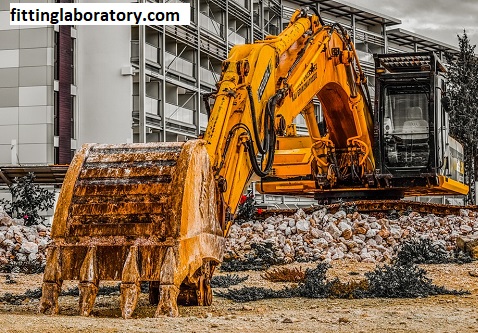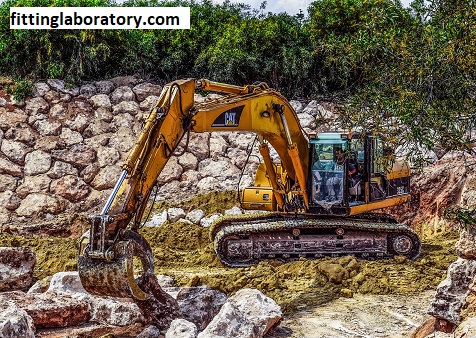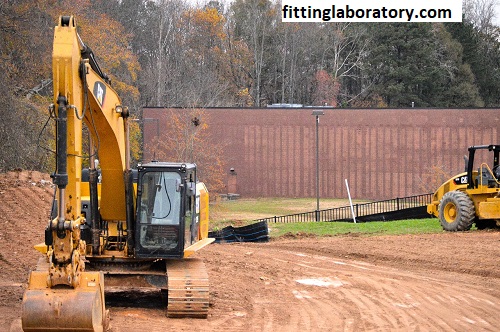Fittings: Everything You Need to Know
Hydraulic fittings:
Hydraulic fittings are a very essential part of hydraulic systems used in different sectors such as construction, manufacturing, and automotive industries. Fittings connect hoses, tubes, and pipes while transferring fluids to ensure hydraulic machinery functions efficiently. Accordingly, hydraulic fittings and their types, uses, and selection are essential for anyone working with hydraulic systems. This article discusses the different topics in hydraulic fittings, thereby equipping you with all the information needed and some questions often asked to help broaden your knowledge.

What Are Hydraulic Fittings?
Hydraulic fittings:
Hydraulic are those devices that connect the various parts of the hydraulic system in such a way that the transfer of hydraulic fluid under pressure will then take place. Various Hoses, pipes, or tubing are connected in hydraulics to let fluid movement. The hydraulic design with the fitting has to be right at construction to avoid damage to hydraulic systems due to huge pressures and leaks.
General Functions of Hydraulic Fittings:
Hydraulic fittings:
- Fluid Transfer: Hydraulics, in the truest sense, the entire reason for hydraulic is the transfer of hydraulic fluid between components.
- Pressure Maintenance: The hydraulics are made under tremendous pressure, which would impact the flow within the system not leaking out thereby being helpful in efficient utilization.
- Flexibility and Movement: The hydraulic system movements are possible through the fitting. Working can be done with the availability of any variety of angles and configurations required for doing a particular job.
- Connection: The hydraulic connectors connect various hydraulic units, pumps, actuators, or reservoirs such that no hydraulic circuit loses its functionality.
Types of Hydraulic Connectors:
Hydraulic fittings:
The hydraulic connections are available in so many configurations, shapes, sizes, etc. Some commonly used fittings are:
1. Straight Fittings
Straight connect two hoses or tubes such that the overall configuration maintains a straight approach. Thus, it usually connects if the hydraulic connection between a component and a part that is in two components or more in between without forming any angle
2. Elbow Fittings
Elbow fittings are used for the change in direction of hydraulic flow. They have various angles like 45 degrees and 90 degrees. Elbow fittings are used wherever there is a constraint in space, which requires the bending of hydraulic lines.
3. Tee Fittings
Tee fittings allow hydraulic fluid to take two different directions. These fittings are necessary in systems where fluid is required to be distributed towards several components.
4. Cross Fittings
Cross fittings: Cross fittings, also sometimes referred to as four-way fittings connect four hoses or tubes on a cross. These are used in intricate hydraulic systems as there are various points in the system where hoses should be attached.
5. Couplings
Couplings are used for temporarily joining two hoses or tubes together. This provides quick disconnects which implies that maintenance and fluid can be changed without taking the time to disassemble the system fully.
6. Adapters
Adapters: Adapters are fittings, which connect with different types of threads or sizes. This can be very useful if components of different manufacturers have to be used in a system.
7. Ferrules
Ferrules are used along with the hoses and tubes in pairs to establish a watertight connection. Usually, these ferrules are crimped on the hose for a stronghold of the attachment.
Hydraulic Fittings Materials:
Hydraulic fittings:
Material is crucial to the performance and durability of hydraulic fittings. The most common materials include:
- Steel: Steel hydraulic fittings are powerful, resist high pressure, and are mainly used in industrial applications.
- Stainless Steel: Hydraulic made from stainless steel is very strong and corrosion resistant, thus more apt for applications with fluids that cause rust or degradation.
- Brass: Brass fittings are used mainly in low-pressure applications. They have excellent corrosion resistance properties and are generally applied in plumbing and hydraulic applications.
- Aluminum: Aluminum fittings are lighter and have corrosion-resistant properties. These are broadly applied in applications where the weight concerned is aerospace and automotive.
- Plastic: Plastic fittings also possess light and corrosion-resistant properties, but they are usually applied in low-pressure applications.
Applications of Hydraulic Fittings:
Hydraulic fittings:
Hydraulics is used in several applications, including:
1. Construction Equipment
Hydraulic fittings are part of construction machinery, such as excavators, bulldozers, and cranes, to transfer hydraulic fluid that powers different functions.
2. Automotive Systems
Hydraulic fittings are used in braking systems, power steering, and suspension systems in automobiles to ensure safe and efficient operation.
3. Manufacturing
Hydraulic systems are widely applied in manufacturing processes, for instance, in assembly lines and injection molding machines. The fittings allow the hydraulic fluid to be transferred safely while the machinery works at its best.
4. Aerospace
The aerospace applications make hydraulics very safe and reliable. They are also applied in flight control systems and landing gear operations.
5. Marine Applications
The usage of hydraulic fittings is indispensable in marine applications specifically with steering systems and winches, and any kind of other hydraulic equipment that is present in boats and ships.

The selection of hydraulic fitting:
Hydraulic fittings:
Some aspects of consideration include:
Pressure Rating
Ensure that the fittings you choose can resist the maximum pressure your hydraulic system will experience. Overrating the fittings can lead to failure and possible safety hazards.
2. Material Compatibility
Determine the type of fluid that will flow through the fittings. Choose materials that are compatible with the fluid to prevent corrosion or degradation.
3. Thread Type
Different fittings may have different kinds of threads (such as NPT, JIC, and BSP). Verify the threads of your fittings are the same as the hoses or tubes that you use.
4. Size
Select fittings the same size as your hoses or tubes in the system. If the size is not appropriate, you will suffer from leakage or loss in flow efficiency.
5. Application Requirements
Look at the precise requirements of your application, such as temperature, vibration, and environmental requirements, to choose the most suitable fitting.
Maintenance Hydraulic Fitting:
Hydraulic fittings:
Hydraulic fittings need periodic maintenance in order to prolong the life span of the hydraulic system as well as safety. Below are some guidelines on how you can maintain your fittings.
- Regular Inspection: Always check your fittings for any wear, corrosion, or leakage signs. Any faulty fitting needs to be replaced.
- Cleaning: Fittings should be cleaned to prevent contaminants from entering the hydraulic system. The cleaners used should not affect the material of the fitting.
- Periodic Tightening: Fittings should be checked and tightened to ensure seal tightness. Fittings may be damaged by over-tightening.
- Fluid Checks: Hydraulic fluid levels and fluid quality should be monitored regularly. Fluid levels that are low or contaminated fluid will mean system failure, with fittings experiencing faster deterioration.
- Professional Servicing: Hydraulic fitting servicing of complex systems shall be recommended to seek a professional technician for servicing and inspection purposes.
Common Hydraulic Fitting FAQs:
Hydraulic fittings:
1. What is the usual hydraulic fitting?
The commonly used are straight fitting, elbow fitting, tee fitting, cross fitting, couplings, adapters, and ferrules.
2. End
Determine the diameter of the hose or pipe to which the fitting will connect, and use the manufacturer’s sizing charts. The fitting size needs to match the hose or tube size for a seal.
3. What is the material composition of hydraulic fittings?
Steel, stainless steel, brass, aluminum, or plastic materials can be used in hydraulics. Different application types and types of fluid require specific choices of material.
4. How do I eliminate leaks through hydraulic fittings?
Careful tightening of fittings and choosing fitting material to match ensure a leak-free hydraulic line. Inspections and maintenance carried out in regular periods may uncover potential problems before leakage could be present.
5. Can I use fittings made by other manufacturers?
Yes, if they are the same size and thread type, but it is always good to ensure that all the parts are of the same safety and reliability standards.
6. Why are thread types important in hydraulic fittings?
The applications for different types of threads vary, such as NPT, JIC, and BSP. If a wrong application of a thread type occurs, leaks will eventually cause the system to fail.
7. How often should I inspect my hydraulic fittings?
Inspect at least every few months; however, if it is used often, more frequent inspections are required. Signs of wear, corrosion, or leaks should be visible.
8. Are plastic fittings suitable for high-pressure applications?
Plastic fittings are generally not advisable for high-pressure applications. They are best suited for low-pressure or non-critical applications.
9. What should I do with a damaged hydraulic fitting?
The damaged fittings must be replaced promptly to avoid leaking or system failure. Never try to repair a fitting because this could weaken the integrity of a fitting.
10. How do I make my hydraulic fittings last longer?
Some of the factors that will ensure fittings can last longer include proper installation, regular maintenance, and choosing the right material for your specific application.

Conclusion:
Hydraulic fittings:
Hydraulic fittings are one of the most important components used in any hydraulic system; they provide the necessary fluid transfer connections to ensure the fluid operates effectively. Knowing different types of fittings, the materials, and their application is very important in deciding which component to use according to the needs. Proper maintenance techniques will ensure your hydraulics live long and dependable lives. For construction and automotive, or any hydraulic system-related field, there is a very high chance for success to operate efficiently as long as there is a complete understanding of hydraulic fittings.